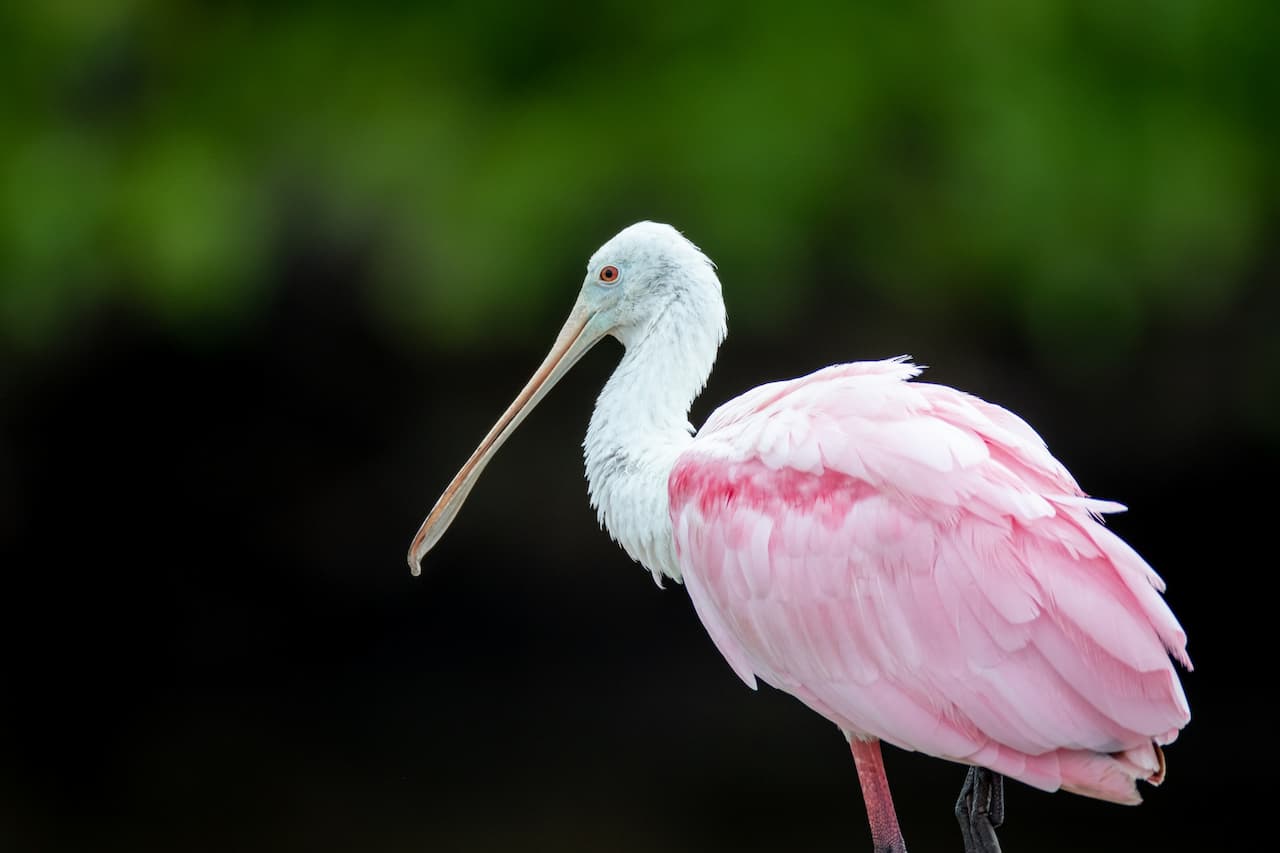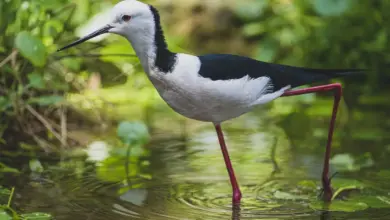Canivet’s Emerald or Fork-tailed Emerald
The Canivet’s Emeralds (Chlorostilbon canivetii) – also known as Fork-tailed Emeralds – are found in Central America, where they have a wide range.
Distribution / Habitat
These hummingbirds are resident in Mexico from Ciudad Victoria south through Ciudad Valles and along the Atlantic coast through the Yucatan Peninsula, Belize and Guatemala; and along the Pacific coast from Tapachula south through Honduras, El Salvador, Nicaragua and Costa Rica.
They are found in tropical dry forest, scrub and secondary growth.
Description
Size
Males measures between 3.3 – 3.5 inches (8.5 – 9 cm) and females between 3 – 3.1 inches (7.5 – 8 cm). The average weight is 0.10 oz (2.8 g).
Plumage Details / Adults
Males: The bright crown is emerald green with copper flashes. There is a white spot behind each eye. The body plumage is mostly emerald green. The forked tail is blue-black, the inner feathers are tipped grey.
Females: There are white and black lined behind each eye. The back of the neck (nape) and the upper parts are golden green. The plumage below, including the throat, is pale grey. She has a shorter tail than the male’s. The inner tail feathers are blue-green and the outer feathers blackish, tipped white.
Immature birds are spotted green below, otherwise similar to females.
Other Physical Details
Bill is red with a black tip in the male and blackish in the female.
Diet / Feeding
Fork-tailed Emeralds primarily feed on nectar taken from plants of the families Rubiaceae, Verbenaceae, and Oenotheraceae. They use their long, extendible, straw-like tongues to retrieve the nectar while hovering with their tails cocked upward as they are licking at the nectar up to 13 times per second. Sometimes they may be seen hanging on the flower while feeding.
Many native and cultivated plants on whose flowers these birds feed heavily rely on them for pollination. The mostly tubular-shaped flowers actually exclude most bees and butterflies from feeding on them and, subsequently, from pollinating the plants.
They may visit local hummingbird feeders for some sugar water, or drink out of bird baths or water fountains where they will either hover and sip water as it runs over the edge; or they will perch on the edge and drink – like all the other birds; however, they only remain still for a short moment.
They also take some small spiders and insects – important sources of protein particularly needed during the breeding season to ensure the proper development of their young. Insects are often caught in flight (hawking); snatched off leaves or branches, or are taken from spider webs. A nesting female can capture up to 2,000 insects a day.
Males establish feeding territories, where they aggressively chase away other males as well as large insects – such as bumblebees and hawk moths – that want to feed in their territory. They use aerial flights and intimidating displays to defend their territories.
Breeding / Nesting
As is typical of hummingbirds, the Fork-tailed Emeralds are solitary in all aspects of life other than breeding; and the male’s only involvement in the reproductive process is the actual mating with the female. They neither live nor migrate in flocks; and there is no pair bond for this species.
Most breeding occurs between January and May. Several males perform in leks (communal courtship displays) that involve singing and flying in u-shaped pattern in front of any females in their territories.
A male will separate from the female immediately after copulation. One male may mate with several females. In all likelihood, the female will also mate with several males. The males do not participate in choosing the nest location, building the nest or raising the chicks.
The female is responsible for building the deep, cup-shaped nest out of plant fibers woven together and green moss on the outside for camouflage in a protected location in a shrub, bush or tree. She lines the nest with soft plant fibers, animal hair and feather down, and strengthens the structure with spider webbing and other sticky material, giving it an elastic quality to allow it to stretch to double its size as the chicks grow and need more room.
The average clutch consists of two white eggs, which she incubates alone, while the male defends his territory and the flowers he feeds on. The young are born blind, immobile and without any down.
The female alone protects and feeds the chicks with regurgitated food (mostly partially-digested insects since nectar is an insufficient source of protein for the growing chicks). The female pushes the food down the chicks’ throats with her long bill directly into their stomachs.
As is the case with other hummingbird species, the chicks are brooded only the first week or two, and left alone even on cooler nights after about 12 days – probably due to the small nest size. The chicks leave the nest when they are about 7 – 10 days old.
Alternate (Global) Names
Czech: kolibrík klínoocasý … Danish: Kløfthalet Smaragd … Dutch: Vorkstaartsmaragdkolibrie … Finnish: pääskysmaragdikolibri … French: Émeraude de Canivet … German: Gabelschwanzkolibri … Italian: Smeraldo di Canivet … Japanese: enbihimeemerarudohachidori … Norwegian: Mayasmaragd … Polish: zlocik widlosterny … Russian: ??????????? ?????????? ??????? … Slovak: smaragdovec pôvabný … Swedish: Svalstjärtad smaragd
Hummingbird Resources
- Hummingbird Information
- Hummingbird Amazing Facts
- Attracting Hummingbirds to Your Garden
- Hummingbird Species
- Feeding Hummingbirds



